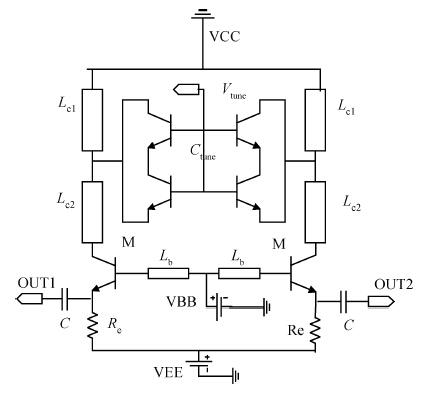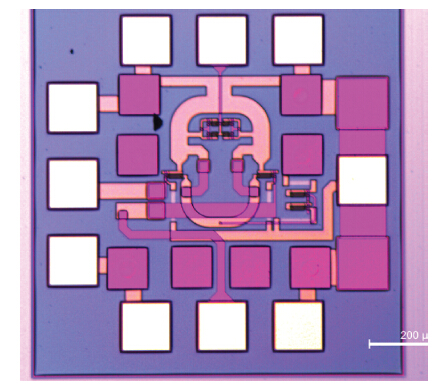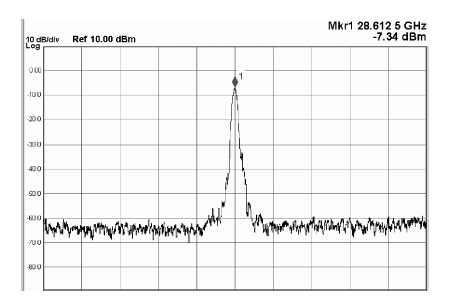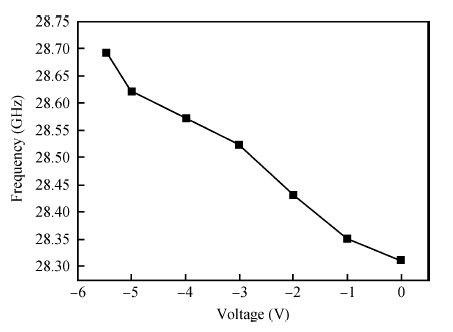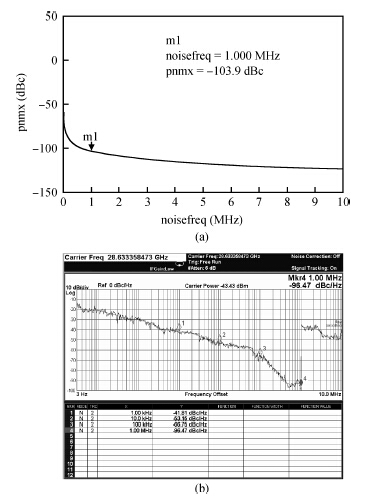| Citation: |
Ting Yan, Yuming Zhang, Hongliang Lü, Yimen Zhang, Yue Wu, Yifeng Liu. Low phase noise GaAs HBT VCO in Ka-band[J]. Journal of Semiconductors, 2015, 36(2): 025001. doi: 10.1088/1674-4926/36/2/025001
****
T Yan, Y M Zhang, H Lü, Y M Zhang, Y Wu, Y F Liu. Low phase noise GaAs HBT VCO in Ka-band[J]. J. Semicond., 2015, 36(2): 025001. doi: 10.1088/1674-4926/36/2/025001.
|
-
Abstract
Design and fabrication of a Ka-band voltage-controlled oscillator (VCO) using commercially available 1-μm GaAs heterojunction bipolar transistor technology is presented. A fully differential common-emitter configuration with a symmetric capacitance with a symmetric inductance tank structure is employed to reduce the phase noise of the VCO, and a novel π-feedback network is applied to compensate for the 180° phase shift. The on-wafer test shows that the VCO exhibits a phase noise of —96.47 dBc/Hz at a 1 MHz offset and presents a tuning range from 28.312 to 28.695 GHz. The overall dc current consumption of the VCO is 18 mA with a supply voltage of -6 V. The chip area of the VCO is 0.7 × 0.7 mm2.-
Keywords:
- VCO,
- GaAs HBT,
- common-emitter,
- phase noise,
- π -feedback
-
References
[1] [2] [3] [4] [5] [6] [7] [8] [9] [10] [11] [12] [13] [14] -
Proportional views






 DownLoad:
DownLoad:
